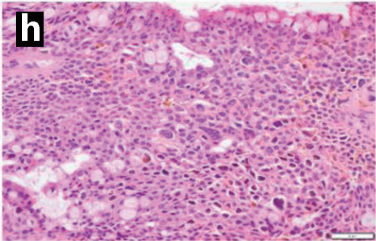Local Control of Conjunctival Malignant Melanoma by Proton Beam Therapy in a Patient With No Metastasis in Six Years From in Situ to Nodular Lesions
DOI:
https://doi.org/10.14740/jmc4351Keywords:
Ocular surface, Conjunctiva, Malignant melanoma, Proton beam therapy, Nivolumab, PD-1 inhibitor, Immune checkpoint inhibitorAbstract
Conjunctival malignant melanoma is extremely rare, with no standard of care established at moment. Here we report a 65-year-old woman, as a hepatitis B virus (HBV) carrier, who presented concurrently a liver mass and lower bulbar conjunctival pigmented lesions in the right eye. Needle liver biopsy and excisional conjunctival biopsy showed hepatocellular carcinoma and conjunctival malignant melanoma in situ, respectively. The priority was given to segmental liver resection for hepatocellular carcinoma after transcatheter arterial chemoembolization. In 1 year, she underwent second and third resection of bulbar conjunctival pigmented lesions, and the pathological examinations constantly showed melanoma in situ. In the course, she showed gradual widening of pigmented lesions to upper bulbar conjunctiva and lower palpebral conjunctiva and lower eyelid. About 2.5 years from the initial visit, the lower eyelid lesion was resected for a genomic DNA-based test of BRAF mutations which turned out to be absent, and then, she began to have intravenous anti-programmed cell death-1 (PD-1), nivolumab every 3 or 4 weeks. She developed iritis in the right eye with conjunctival melanoma as an immune-related adverse event, 3 months after the beginning of nivolumab, and so she used daily topical 0.1% betamethasone eye drops to control the intraocular inflammation. She showed no metastasis in 6 years of follow-up, but later in the course, 5 years from the initial visit, she developed abruptly a non-pigmented nodular lesion on the temporal side of the bulbar conjunctiva along the corneal limbus, accompanied by two pigmented nodular lesions in the upper and lower eyelids in a few months. She thus, underwent proton beam therapy toward the conjunctival melanoma and achieved the successful local control. Proton beam therapy is a treatment option in place of orbital exenteration, and multidisciplinary team collaboration is desirable to achieve better cosmetic and functional outcomes in conjunctival malignant melanoma.

Published
Issue
Section
License
Copyright (c) 2024 The authors

This work is licensed under a Creative Commons Attribution-NonCommercial 4.0 International License.









